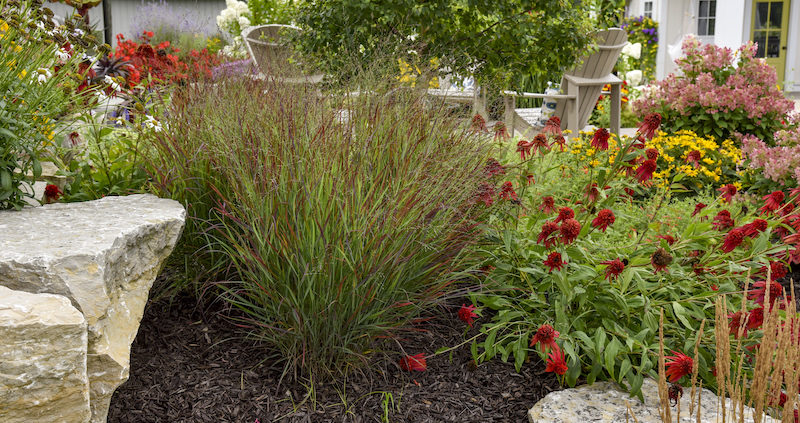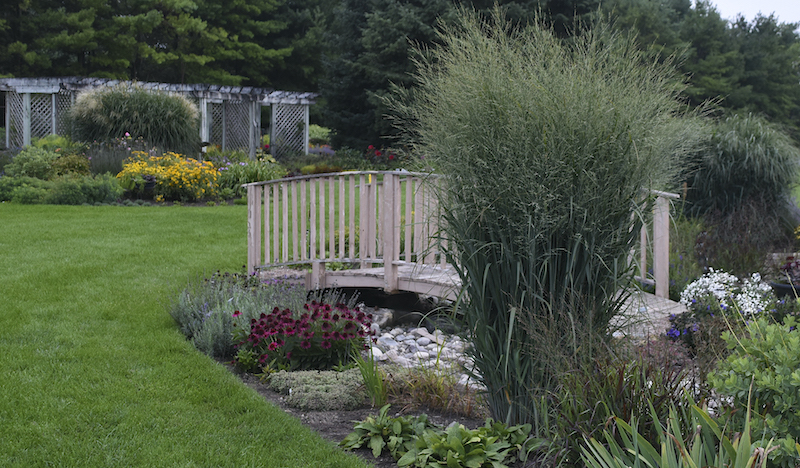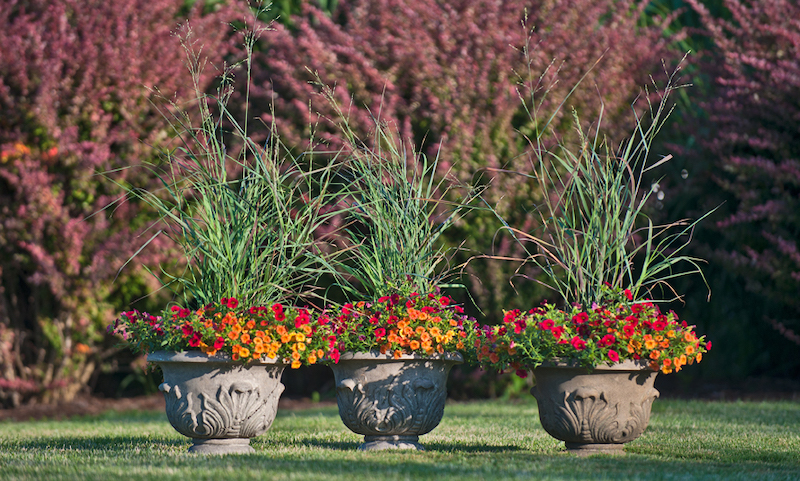Growing Switchgrass
Switchgrass, also known as Panicum virgatum, is a native prairie grass that has an upright, narrow form. It blooms in mid-summer with flower plumes that mature to clouds of airy seedheads in the fall. It grows easily in most garden conditions and tolerates both clay and sandy soils. The seeds persist in winter and provide valuable food for birds and other wildlife.
Most varieties reach 4 – 5 feet tall and 2 – 4 feet wide. These beautiful grasses are well-suited for planting in meadows, prairies, and cottage gardens and look best arranged in large drifts. In addition to their high ornamental value, they provide important habitat for wildlife.

Planting Switchgrass
Switchgrass performs best in full sun, although it tolerates partial shade. It prefers evenly moist, well-drained soil of average fertility. This grass may flop in overly rich soils. Find a sunny location with enough space for this grass to reach its mature size. Dig a hole just wide enough for the root ball, and set the the crown slightly above the soil surface to allow the soil to settle over time.
Backfill the hole with native soil and avoid mixing in soil additives, such as manure or compost. Saturate the planting hole with water to ensure that no air gaps remain. Add a layer of organic compost around the root zone to conserve moisture.

Watering Switchgrass
Swithgrass grows best with regular water during the growing season. It develops drought tolerance over time, but will require weekly water during the first year after planting. Once the roots are established, this grass requires less supplemental water; however, weekly watering, especially during hot, dry spells will help this grass look its best. Containers dry out faster than plants in the ground, and thus potted switchgrass should be watered whenever the top two inches of soil feels dry.
Fertilizing Switchgrass
This ornamental grass does not need to be fertilized. You can apply organic compost around the base of the grass each spring to feed the soil. Application of fertilizers rich in nitrogen can weaken this grass and cause it to flop.
Pruning Switchgrass
Switchgrass will die back over the winter and can be cleaned up in the spring before new growth starts. Use a pair of sharp, sterilized pruning shears to cut the stems to a few inches above the ground. Some gardeners may be tempted to cut this grass back in the fall, but leaving the spent foliage during the winter provides cold protection, winter interest, and habitat for wildlife.
Caring For Switchgrass in Pots
Switchgrass is easy to grow in containers. Choose a frost-proof container with large drainage holes. The container should be big enough to accommodate the large root system of switchgrass. Use potting soil that is for specifically designed for containers to prevent water-logged pots.
To pot this grass, cover the roots with soil only to the depth the grass was originally planted, and leave a couple inches at the top of the container for watering. Water regularly during the summer when the top two inches of soil are dry to the touch, approximately 1 – 2 times per week.

Winter Care for Switchgrass
Most switchgrass varieties are hardy in zones 3 – 9 and will not need any special winter care. During the winter, the foliage will die back and turn bronze or tan color. You can leave the clumps standing for ornamental and wildlife value. In the spring, cut this grass back to a few inches above the ground. This is a long-lived perennial that should slowly expand each year.
Common Care Questions About Switchgrass
What Is The Growth Rate of Switch Grass?
Switchgrass is slow grower, taking two to three growing seasons to become fully established.
Is Switch Grass Invasive?
It is not invasive in nature.
Is Switch Grass An Annual Or Perennial?
Switchgrass (Panicum virgatum L.) is one of many warm-season perennial grasses native to North America.
How Tall Does Switch Grass Grow?
Most varieties reach 4 – 5 feet tall and 2 – 4 feet wide.
Have a question about Switchgrass Plant? Fill out the form below and we will try and get back to your question as soon as possible. We may even feature your question in this article to help other gardeners!
 |
Author Jessica Mercer - Published 7-13-2022 |
